1st March 2012
Moon
At long last the new QSI 683 camera is ready to take images.The sky was very overcast so I used the Moon to get the first focus adjustment.
This is a single 0.03 second exposure through thin cloud.

Image cropped and enlarged

4th March
Rosette Nebula in Hydrogen alphaThis is the first attempt at narrowband imaging.
7x10 minutes with the Astrodon Hydrogen alpha 5nm filter.
The image scale allows only the heart of the nebula to be captured in one frame.

12th March
Rosette Nebula
OIII and SII data added and combined using the Hubble palette.
I was surprised by the different levels of noise obtained with the three filters.
Hydrogen alpha is very smooth, but SII shows lots of grainy noise.
Experts on PAIG tell me this is perfectly normal.

19th March
M95 SupernovaPSN J10435372+1140177 was discovered on 2012 March 16.8493 by J. Skvarc; Alessandro Dimai of the Italian Supernovae Search Project.
The magnitude measured with a photometric V filter was 13.474
Mars is very close to the galaxy at present, hence the uneven illumination in the image (top right corner).
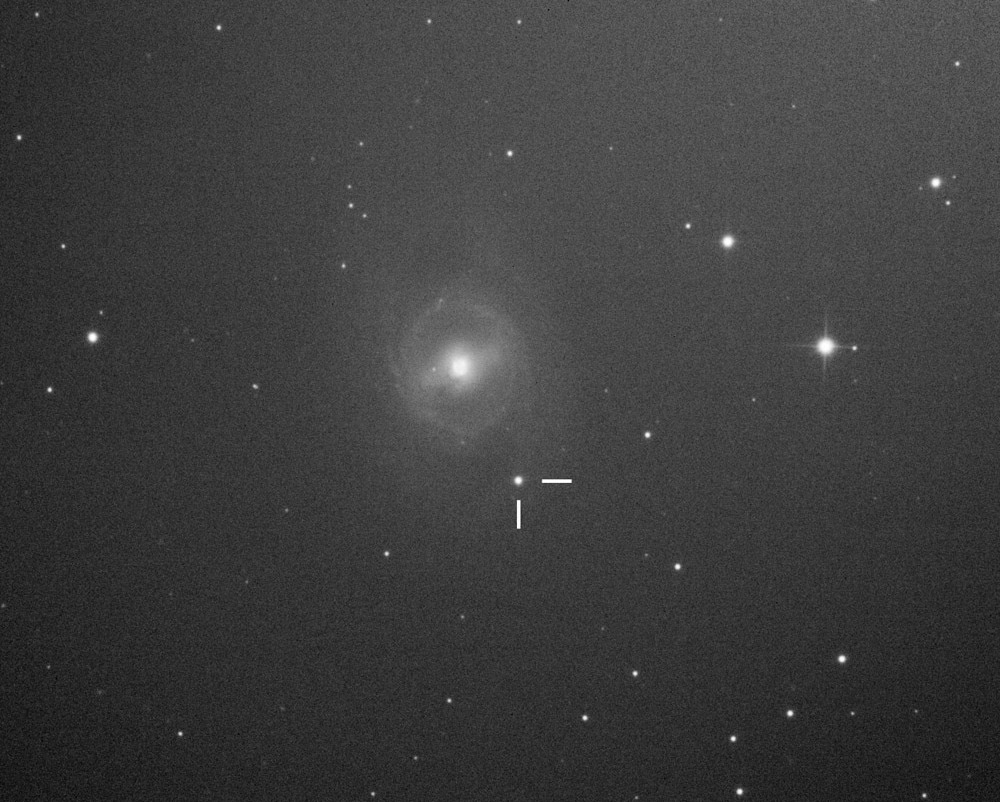
21st March
M95 Supernova| This is not brightening as rapidly as the M101
supernova. (My readings in red). |
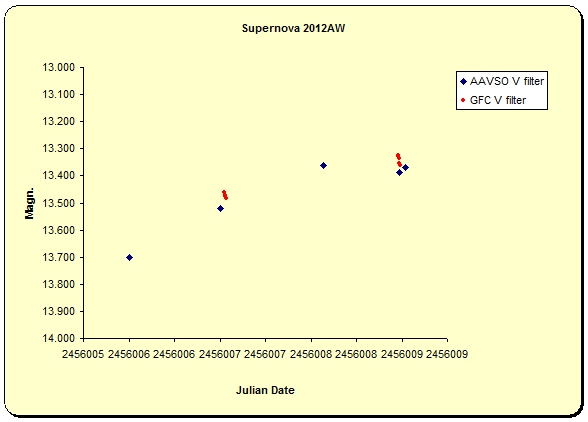 |
|
NGC2174 - Monkey Head Nebula
Narrowband image in Hubble pallette
Ha, OIII, SII, 140,140, 60 minutes in 10minute subs

24th March
M95 Supernova| The maximum brightness is soon to be
reached. |
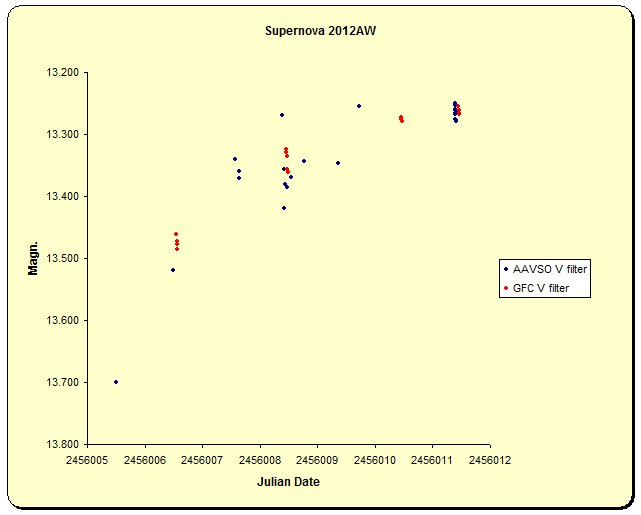 |
The Cone Nebula, ngc 2264
Poor seeing conditions with high level haze.
14x10 minutes in Ha

25th March
Thin crescent Moon just after sunset.0.04 second exposure, QSI camera

ngc 2254 Cone Nebula in Hubble pallette
15x10 minutes Ha, 4x10 minutes OIII, 3x 10 minutes SII.
There was very little nebulosity in the OIII and SII frames, hence the shorter times.

The same data in a more realistic mapping.
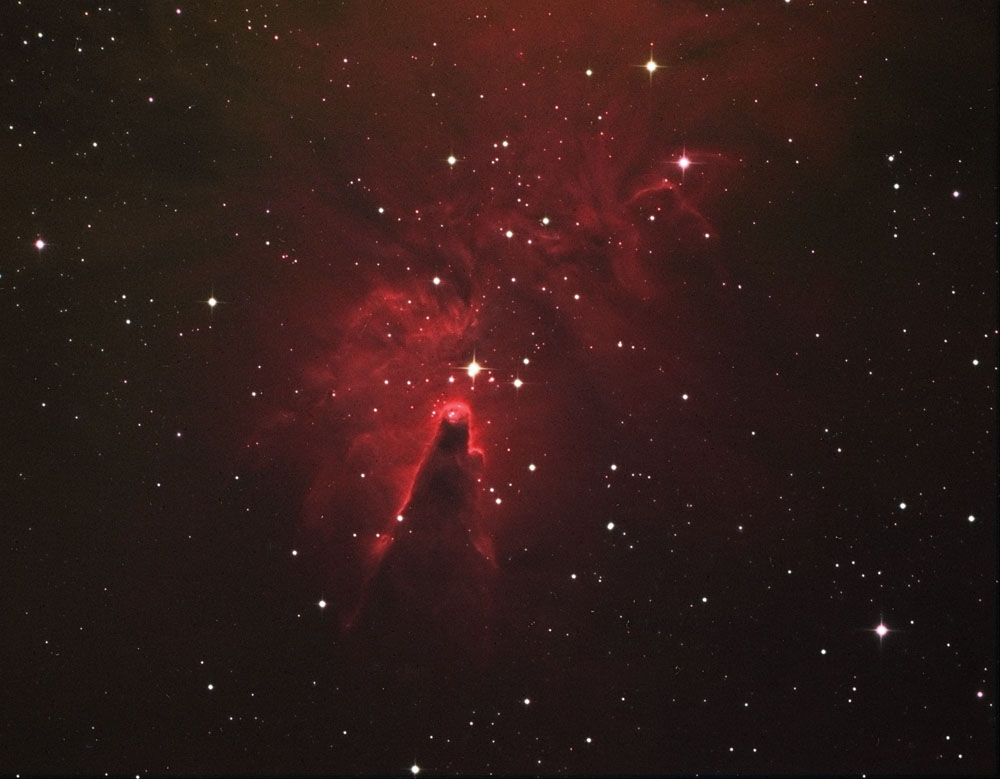
26th March
ngc2264 The northern part
Anomaly in ngc2264
The first 10 minute exposure of ngc 2264 showed an object looking very much like a star that did not show up in subsequent frames.
It was also missing in the preceding test frame.
Cosmic ray blemishes usually appear as streaks, whereas this was a neat circle. The pixel intensity was also much higher than normal cosmic ray traces.
A more detailed account of the anomaly is here.
If you have any idea how this could have been caused, please leave a comment in the Guest book.

30th March
| Supernova in M95 now past maximum
brightness and starting to
fade. |
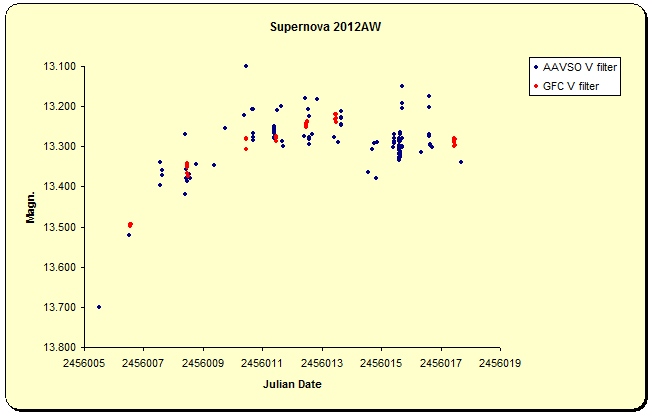 |